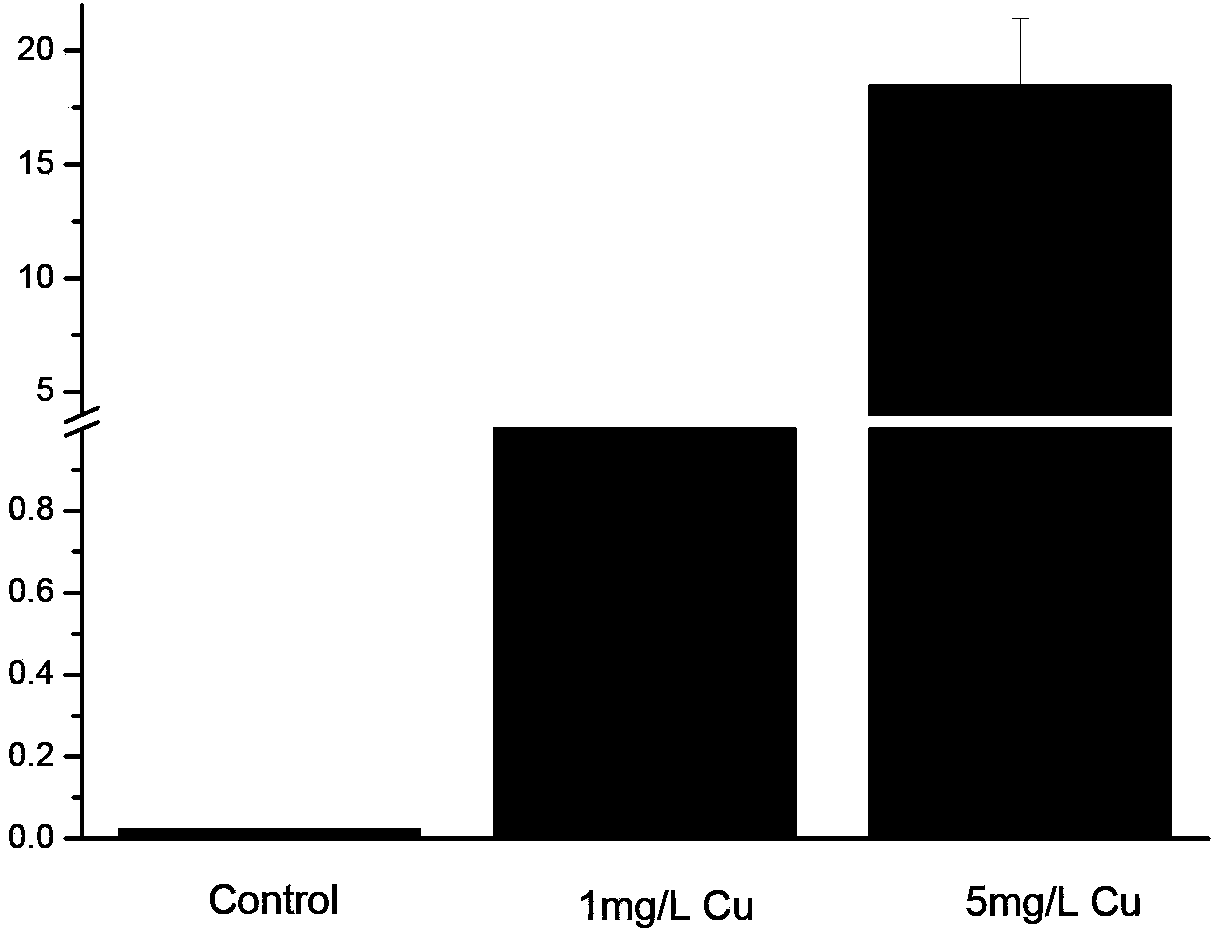Perinereisaibuhitensis beta-1, 4-endoglucanase gene sequence and perinereisaibuhitensis beta-1, 4-endoglucanase gene clone method
A technology of endoglucanase and P. didentate nereis, which is applied in the fields of genetic engineering, plant genetic improvement, botany equipment and methods, etc., and can solve problems that are not completely clear
- Summary
- Abstract
- Description
- Claims
- Application Information
AI Technical Summary
Problems solved by technology
Method used
Image
Examples
Embodiment 1
[0016] The β-1,4-endoglucanase gene of P. didentate worm is shown in SEQ ID NO.1:
[0017] gaaaacagtt tcaccagaag gaattcagtc atggcttcct ttgcttacat ccttgctgcg
[0018] gtggcacttc tggcttcctg ccatgcacag tacaactacc gcaacgcgct tcagaaatcc
[0019] atcctattct acgctgccca aagatctggc cgactcccta gtaacaaccc aatagactgg
[0020] aggggagact ctgctcttgg tgatcaggga aacaatggcc aggacctaac tggaggatgg
[0021] tatgatgctg gagaccatgt aaaattcggt cttcccatgg cttggtctgc cacgacactc
[0022] atctggggta tgatcgattt tgcaaacgga tatggagcag acaggaataa tgcaatgcag
[0023] agtgttcgat gggccctgga ctacttcatg aagtgccatg tgtcagacaa tgaattctat
[0024] ggacaggttg gagatggaca cgctgaccat gcctactggg gtaggccaga ggagatgaat
[0025] atgaacagac ctgcttggag catcagaccc ggagcacctg gatctgacct cgcaggagaa
[0026] actgctgctg ccctggctgc gggatccatt ctcttcagtg attctgatgc aaactatgct
[0027] aaccagctgc gaaaccatgc tcgtactctc tacgactttg cctacaataa ccgaggagta
[0028] tatcatgact ccatccctaa tgctgctgac ttttaccgat ctggcggata ccaagatgaa ...
Embodiment 2
[0051] Example 2 Cloning method of C. bidenta β-1,4-endoglucanase gene
[0052] The method for cloning the above-mentioned β-1,4-endoglucanase gene from the clam worm is as follows:
[0053] (1) Total RNA was extracted from live and healthy adult tissues of P. didentatus;
[0054] (2) Use TaKaRa5'-Full Race kit and downstream outer specific primer EG-Outer-R and downstream inner specific primer EG-Inner-R for 5'-RACE reaction, and clone to obtain β-1,4-endo Glucanase gene 5' end sequence;
[0055] (3) Perform RT-PCR reaction with the reverse primer EG-F, and clone the 3' end sequence of the β-1,4-endoglucanase gene;
[0056] (4) The nucleotide sequence of the β-1,4-endoglucanase gene was finally obtained by splicing and correcting the sequence fragments.
[0057] Wherein said primers include:
[0058] Downstream outer specific primer EG-Outer-R: 5'-TTCCTGTCTGCTCCATATCC-3'
[0059] Downstream inner specific primer EG-Inner-R: 5'-GTTAGGTCCTGGCCATTGTT-3'
[0060] Reverse pr...
Embodiment 3
[0134] Example 3 Expression of Neris bidentata β-1,4-endoglucanase under different concentrations of Cu stress
[0135] With CuSO containing 1mg / L or 5mg / L respectively 4 The artificial seawater solution (salinity is 16‰) treated the Nereis didentate shown in the above sequence table SEQ ID NO.1 for 3 days, and at the same time extracted the sutra containing 1mg / L or 5mg / L CuSO 4 Nereis worms in different treatment groups of artificial seawater solution and control group (without CuSO 4 Treatment) RNA of Nereis worm, see the above examples for the extraction method of total RNA, use fluorescent quantitative PCR instrument to do expression difference analysis, quantitative PCR primers are S1 and S2
[0136] S1: 5'AATGATGACAGGCAGGATTACG 3'
[0137] S2: 5'TCCCAGCACCGATTTAGAGTT 3'
[0138] The results showed that the expression of β-1,4-endoglucanase was significantly increased after Cu stress treatment, which was 115 and 824 times that of the control, respectively (see figure...
PUM
| Property | Measurement | Unit |
|---|---|---|
| molecular weight | aaaaa | aaaaa |
Abstract
Description
Claims
Application Information
 Login to View More
Login to View More - R&D
- Intellectual Property
- Life Sciences
- Materials
- Tech Scout
- Unparalleled Data Quality
- Higher Quality Content
- 60% Fewer Hallucinations
Browse by: Latest US Patents, China's latest patents, Technical Efficacy Thesaurus, Application Domain, Technology Topic, Popular Technical Reports.
© 2025 PatSnap. All rights reserved.Legal|Privacy policy|Modern Slavery Act Transparency Statement|Sitemap|About US| Contact US: help@patsnap.com



